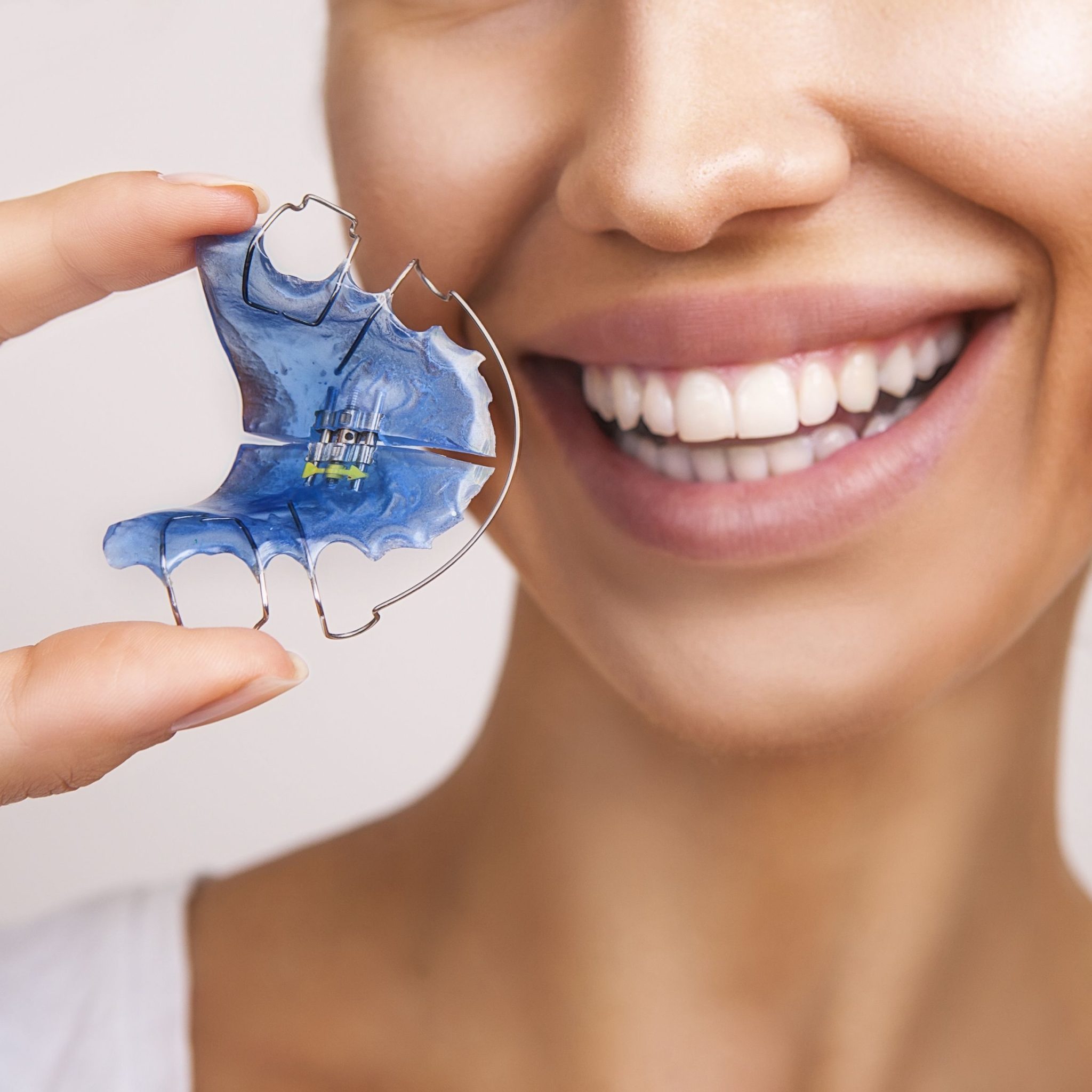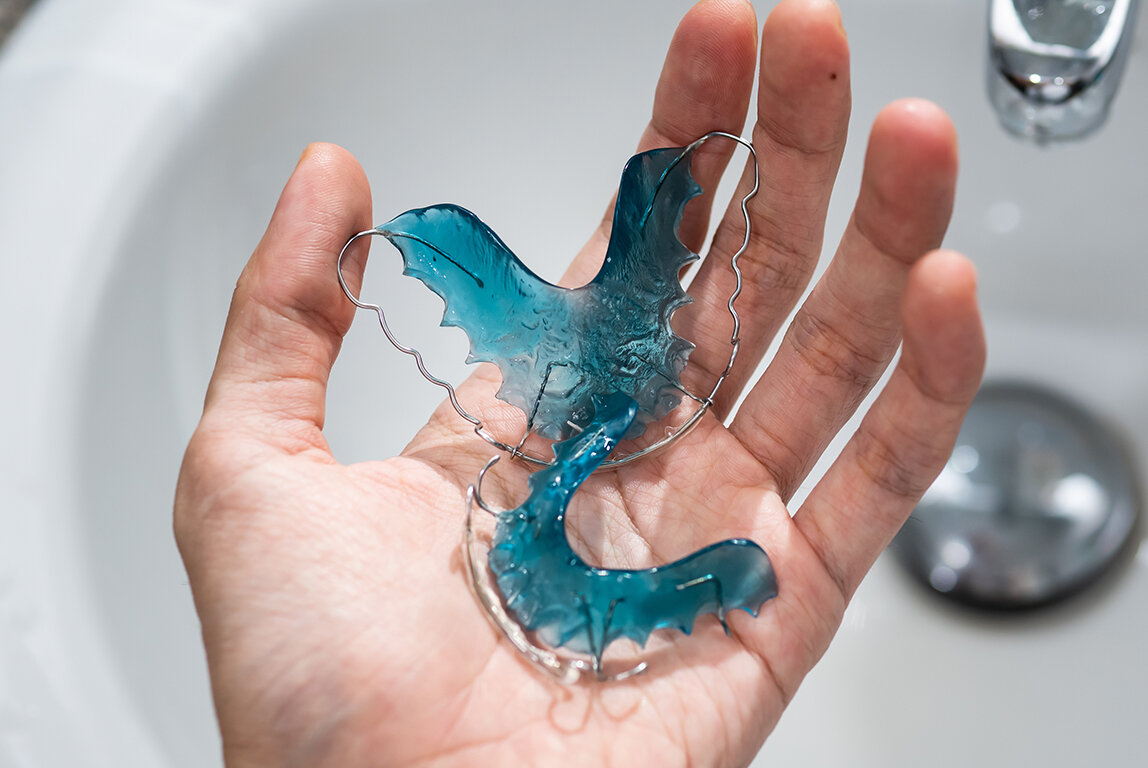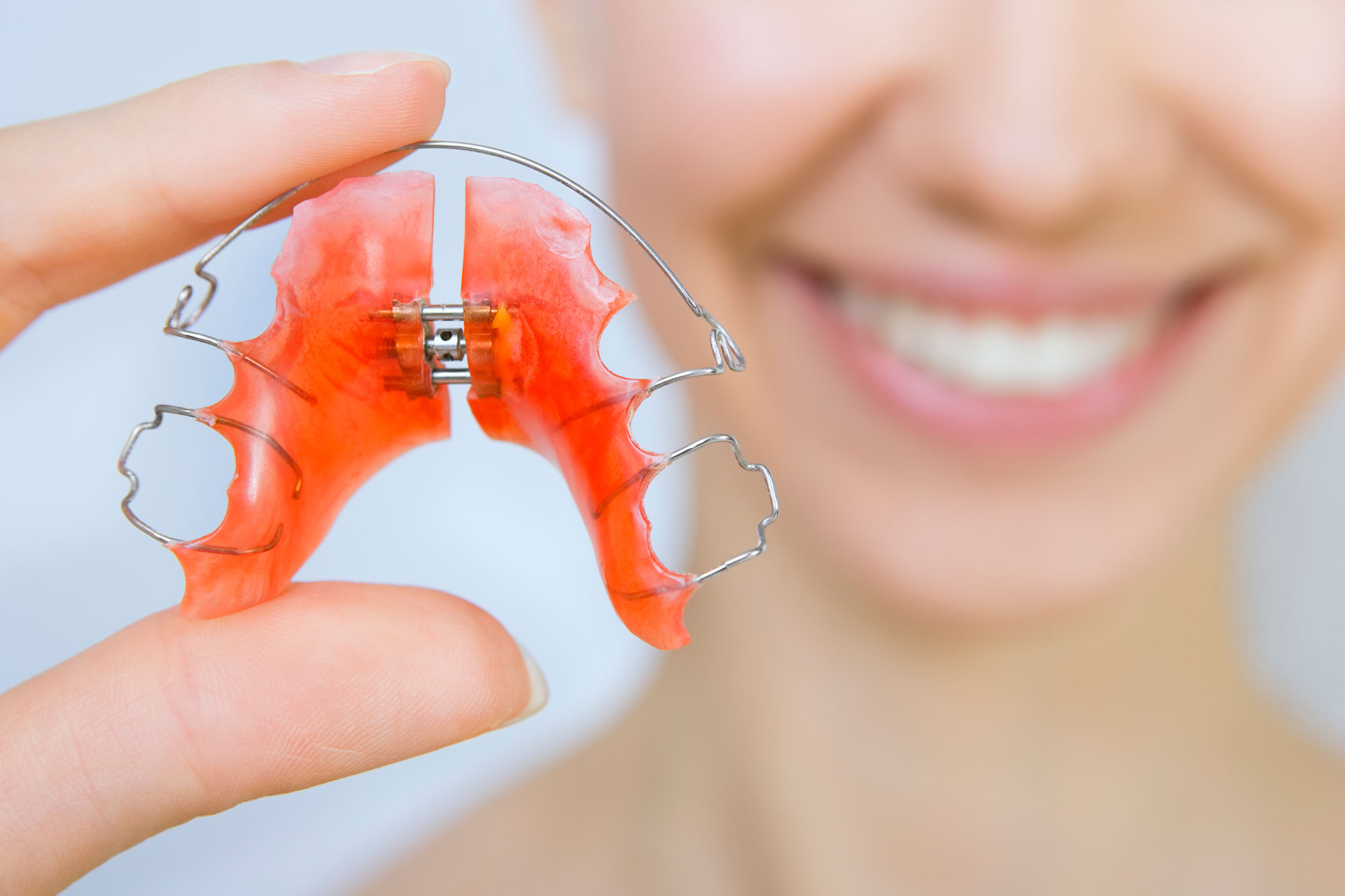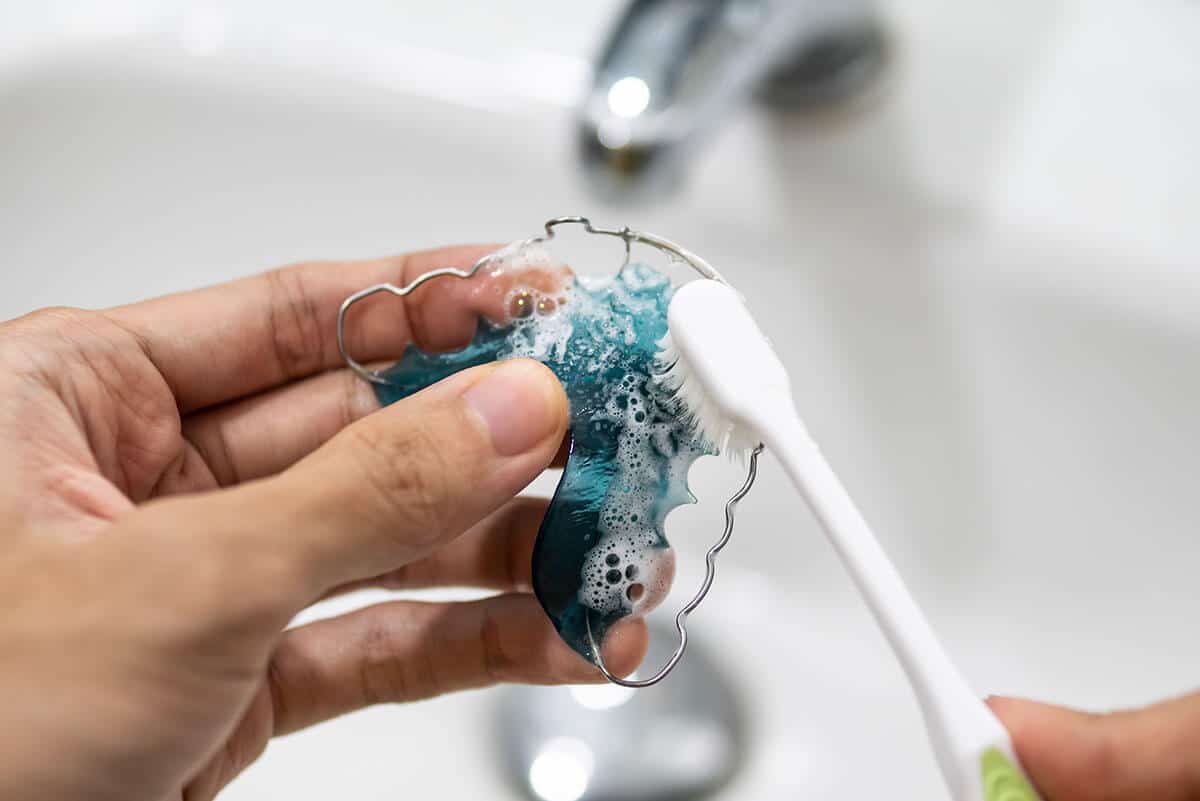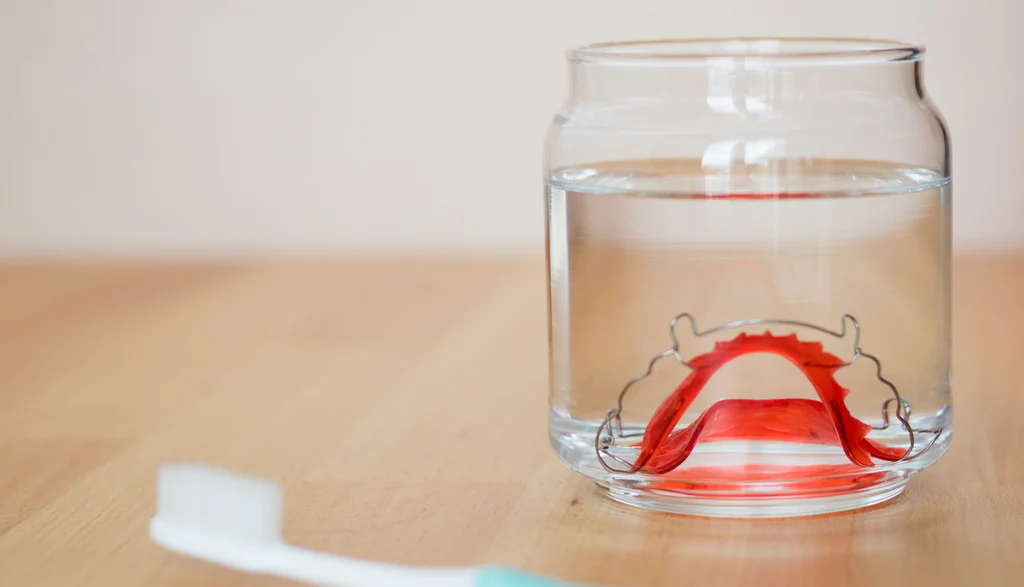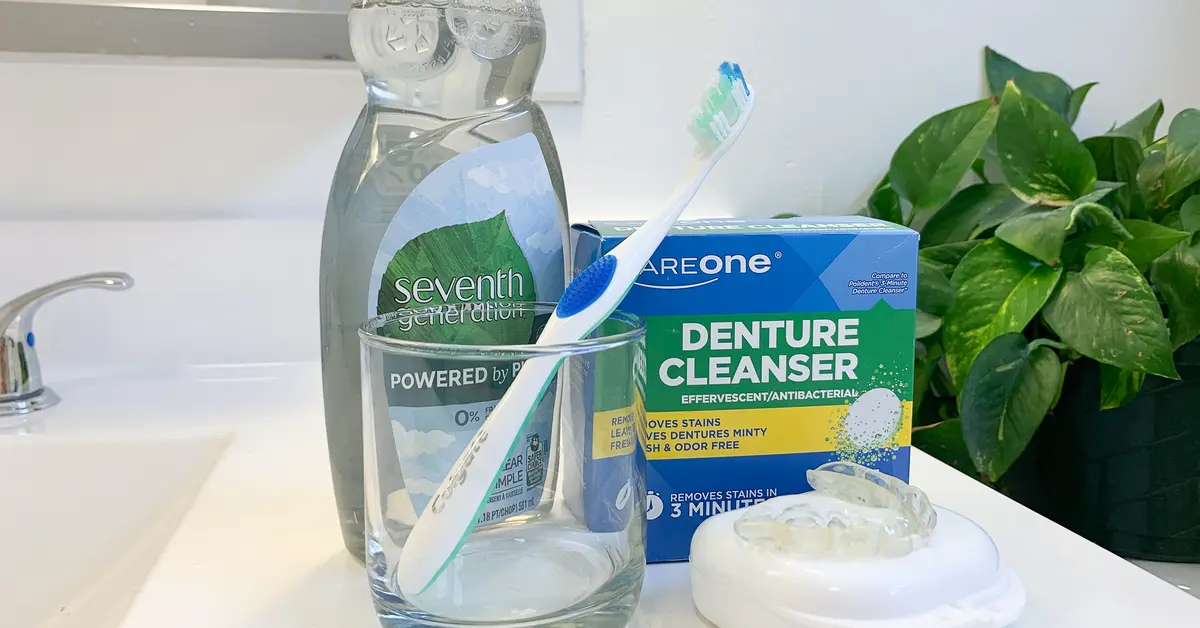Both kids and adults may need braces to straighten their teeth. After the braces are removed, it’s still necessary to give your teeth the support they need to retain their new position. It’s for that reason that you’ll need to wear an aptly-named retainer.
A retainer for your teeth comes into contact with food and may also be exposed to germs when you get sick. Your retainer can even accumulate plaque and tartar, just like your pearly whites. Whether you’re cleaning a retainer for yourself, DIYing sanitization after your kid gets sick, or you’re a cleaning pro, you’ll need to know what to do (and not to do) to banish germs and keep retainers clean and sanitary.
What is a Retainer?
A retainer is an orthodontic appliance (weird word, we know!) that’s designed to prevent teeth from reverting to their previous position after someone wears braces. They may be made of:
Any cleaning you do will need to be completed with the materials in your retainer in mind. It’s important to avoid using anything that might make it easier for germs to cling to your retainer or that might damage its structure.
Why Do Retainers Need to Be Sanitized?
Before we walk you through some of the most effective methods to clean and sanitize your retainer, let’s talk about why sanitization is necessary.
- Even when you’re not sick, the human mouth contains tons of bacteria that can get into the retainer. If the retainer isn’t cleaned regularly, it may smell bad or get discolored.
- When the wearer gets sick, whether they’ve got a cold or strep throat, harmful bacteria and germs can get into the retainer. In some cases, the wearer can get reinfected. There’s also a chance they may spread germs to others in the house if they cough, share a drinking glass, or use the same utensils.
- Depending on what the retainer is made of, there’s a chance that not sanitizing and cleaning it could lead to discoloration, giving the retainer an unattractive, yellow appearance.
Retainers should be cleansed every day and sanitized as often as necessary. You should always talk to your orthodontist to make sure you understand what materials your retainer is made of and the best way to clean it.
Cleaning Products and Supplies to Sanitize a Retainer
Here are the cleaning products and supplies to clean and sanitize your retainer.
Cleaning Products |
Cleaning Supplies |
Distilled water |
Retainer case |
Baking soda |
Small bowl |
Castile soap |
Soft toothbrush |
|
|
3% hydrogen peroxide solution |
|
It’s very important not to use anything abrasive on your retainer. In most cases, as you’ll see below, you won’t even use a toothbrush.
How to Clean Retainers on a Daily Basis
We’ll start with a simple method to clean your retainer on a daily basis. All you need is your retainer case, some distilled water, and some castile soap.
Step 1: Fill your retainer case up with distilled water, then add just a few drops of castile soap.
Step 2: Rinse your retainer to remove food or whatever else might be stuck on it.
Step 3: Put the retainer in the retainer case and leave it to soak for at least 20 minutes.
Step 4: Rinse the retainer thoroughly to remove the soap before wearing it.
Step 5: Rinse the retainer case and allow it to air dry, so it will be ready for you to clean your retainer the next day.
Castile soap is gentle and will leave your retainer looking clean and smelling fresh.
How to Sanitize a Retainer After Being Sick
Getting sick means that your retainer may be exposed to germs and harmful bacteria. Here are the steps to follow to banish those germs and get your retainer truly clean. (You should also clean your home after an illness.)
Step 1: Combine equal parts distilled water and baking soda in a small bowl.
Step 2: Use clean hands to apply the paste to your retainer, making sure it’s completely coated.
Step 3: Use a soft-bristled toothbrush to gently scrub the retainer to remove all germs and bacteria.
Step 4: Rinse the retainer to remove all baking soda.
Step 5: Make sure to also clean the retainer case to remove any bacteria and germs. You can use antibacterial soap for this step.
Keep in mind that you may also want to replace your toothbrush after being sick. If you decide not to replace it, use one of these methods to disinfect your toothbrush.
How to Clean Yellow Retainers
In the event that you’ve got a retainer that’s made of clear acrylic, then it’s possible that yellow stains can appear over time. Nobody wants to have a yellow covering over their teeth, so here’s what you can do to banish those stains.
Step 1: First, clean your retainer with baking soda and water as in the previous section.
Step 2: In a bowl, combine equal parts distilled water and a 3% hydrogen peroxide solution..
Step 3: Let your retainer soak for a maximum of 30 minutes to remove stains. You don’t want to soak it for longer than that, since exposure to hydrogen peroxide may eventually damage your retainer.
Step 4: Rinse your retainer with warm water to remove hydrogen peroxide before putting it back into your mouth. Don’t use hot water, which may damage your retainer.
This process should remove yellow stains. Regular cleaning with hydrogen peroxide will prevent yellow stains from forming and keep your retainer looking its best.
Two other popular methods to remove stains from your retainer include using an ultrasonic dental cleaner or dental cleaning tablets. Watch this video to see a comparison of how ultrasonic cleaners for retainers compare to dental tablets.
How to Remove Crusty Build-Up On Your Retainer
One of the things that can happen when you wear a retainer every single day is that your saliva and food residue can accumulate on the retainer itself. Follow these steps to get rid of it.
Step 1: Begin with a quick cleaning of your retainer with baking soda.
Step 2: Combine equal parts of white vinegar and distilled water in a bowl that’s large enough to submerge your retainer completely.
Step 3: Place your retainer in the solution and leave it to soak for a minimum of 30 minutes.
Step 4: If after a half an hour there’s still build-up on your retainer, use a soft toothbrush to gently scrub the retainer. You can also soak for additional time as needed.
Step 5: Rinse your clean retainer in warm water to remove vinegar.
Vinegar’s got a strong smell, so you might need to give it a second rinse to get rid of the odor.
Things to Avoid When Cleaning Retainers
Here are some of the things we recommend against when you’re cleaning a retainer.
- Abrasive cleaning products, including some toothpastes, can scratch or abrade your retainer. Since scratches might trap food and/or bacteria, it’s best to avoid using them.
- Hot water may also damage your retainer. You may use warm water to rinse it, but avoid anything at a high temperature that can warp the retainer itself.
- Bleach is not safe to use on your retainer. It can damage the acrylic and may leave an unpleasant taste even after rinsing. It’s also not the right disinfectant for the bacteria found in your mouth.
- Disinfectant wipes aren’t safe to use either.
- Don’t ever attempt to clean your retainer by putting it in the dishwasher or microwave. High heat can ruin its shape, requiring you to spend money on a new retainer.
Your orthodontist may recommend specific products to clean and disinfect your retainer, in which case that’s what you should use.
Best Dental Cleaners for Retainers: A Comparison
Here’s our rundown of how the best retainer cleaners compare to one another. Keep in mind, you should always talk to your orthodontist about how to clean your retainer first.
|
Baking Soda |
Toothpaste |
Vinegar |
Hydrogen Peroxide |
Cleansing Tablet |
Ultrasonic |
Removes food particles |
Y |
Y |
N |
N |
N |
N |
Removes stains |
Y |
Y |
N |
Y |
N |
Y |
Removes odors |
Y |
Y |
Y |
Y |
Y |
Y |
Sterilizes |
Y |
N |
Y |
Y |
Y |
Y |
FAQ About Sanitizing Retainers
How often should you sterilize your retainer?
We suggest sterilization once a week and cleaning every day
Can you boil your retainer?
No, we don’t recommend that. High heat can permanently warp your retainer and make it ineffective.
How do I prevent my retainer from smelling bad?
Baking soda does an excellent job of killing bad odors and disinfecting your retainer. You can limit the ability of odors to form by drinking plenty of water during the day.
Can I use toothpaste to clean my retainer?
Sure, but select a non-abrasive toothpaste to avoid tearing up the retainer or scratching it.
How do I know when it’s time to replace my retainer?
It’s time for a replacement if you notice your retainer is misshapen or permanently stained.
Conclusion
It’s not very difficult to keep your retainer in good shape and avoid the formation of plague, tartar, yellow stains, and unpleasant odors. Following the steps above from our Pros, you can be sure that your retainer will last a long time and look its best.
